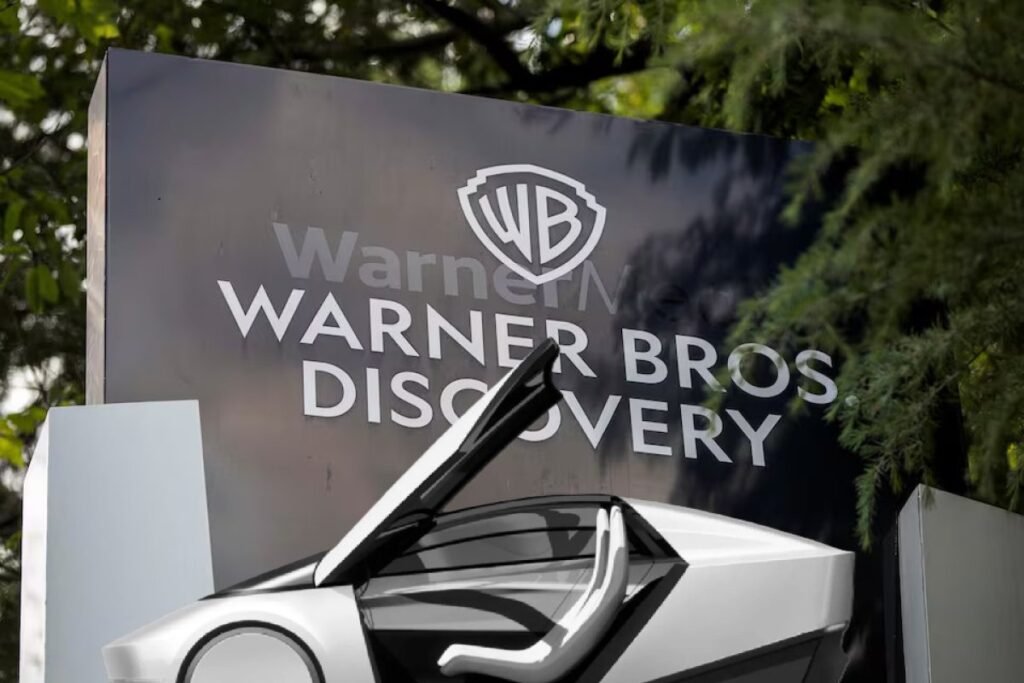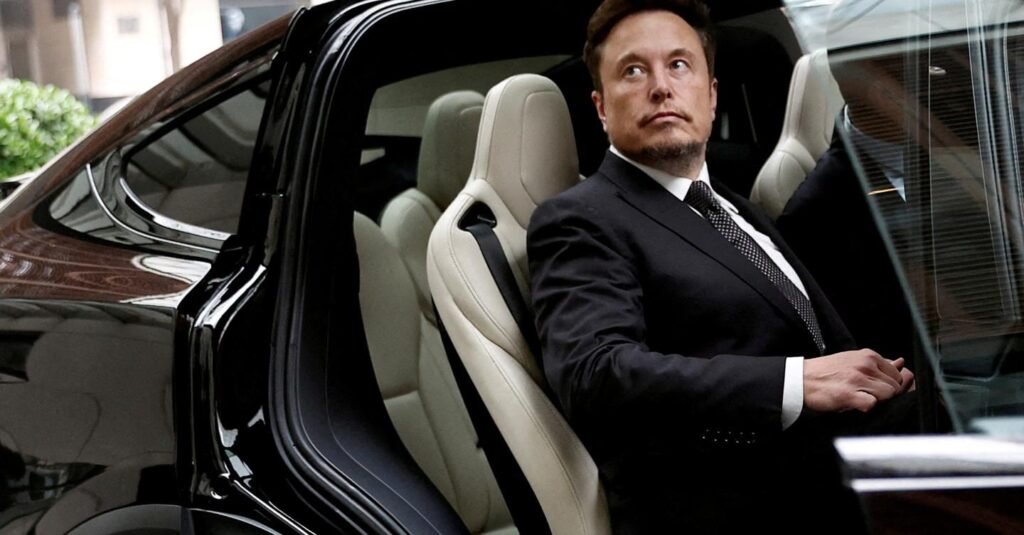Tesla’s recent Robotaxi event has caused a revolution in the automotive industry, sparking intense discussion among investors and analysts. The much-anticipated unveiling of Tesla’s autonomous vehicle strategy has had an impact on the company’s financial outlook and stock performance. However, the event’s reception and its influence on Tesla’s market position have been mixed, leaving many to question the effectiveness of the presentation.
The investor reaction to the Tesla Robotaxi event financial details has brought several key issues to light. This article will analyze the gap between expectations and reality, examine the crucial elements missing from the presentation, and explore the market’s response. Additionally, it will discuss the potential regulatory hurdles facing Tesla’s autonomous driving ambitions and their implications for the company’s future earnings. By delving into these aspects, we aim to shed light on what went wrong and what it means for Tesla’s position in the rapidly evolving autonomous vehicle landscape.
The Hype vs. Reality Gap
Pre-event expectations
The Tesla Robotaxi event had generated significant buzz in the automotive and tech industries. Investors and analysts had set high expectations for the unveiling of Tesla’s autonomous vehicle strategy. Many believed this event would provide a clear roadmap for the company’s future in the rapidly evolving self-driving car market.
Rumors had been circulating for weeks, with some speculating that Tesla would reveal more than just a “Cybercab.” There were whispers about the possibility of unveiling a USD 25,000 mass-market electric vehicle, a Robovan, and even the long-awaited Roadster. These rumors only served to heighten the anticipation surrounding the event.
Wall Street analysts viewed the Robotaxi event as a potential pivotal moment for Tesla. With the company’s stock down 40% from its 2021 record high, investors were eagerly looking for fresh catalysts to reignite interest in Tesla shares. Some analysts even suggested that AI and full self-driving developments could yield as much as USD 1 trillion in value for Tesla.
Actual event content
The reality of the event, however, fell short of these lofty expectations. Tesla showcased a long-awaited robotaxi with two gull-wing doors and no steering wheel or pedals. The presentation was high on theatrics, with CEO Elon Musk riding the two-seat Cybercab briefly to the stage to give his remarks.
Musk made several bold claims during the event. He promised that Tesla’s popular Model 3 and Model Y vehicles would be able to operate without driver supervision in California and Texas by next year. He also stated that the Cybercab price tag would be below USD 30,000, with production starting “before 2027”.
The event also featured dancing humanoid robots that mixed drinks at the bar, which Musk said Tesla will eventually sell for USD 20,000 to USD 30,000 each. However, the presentation was light on concrete details about business models, such as a ride-hailing service, and notably absent was any mention of the anticipated “affordable” vehicle.
Investor disappointment
The market’s reaction to the Tesla Robotaxi event was largely one of disappointment. Tesla shares fell approximately 8% in morning trading following the event, wiping more than USD 50 billion off the electric-car maker’s market value.
Many investors and analysts expressed frustration with the lack of substantial information provided during the presentation. Adam Jonas, Morgan Stanley’s high-profile auto analyst and a Tesla bull, proclaimed, “That’s it? Disappointing lack of detail”. Wells Fargo analysts echoed this sentiment, describing the event as mostly “razzle-dazzle” with “little substance”.
Investors had hoped for more concrete plans and measurable impacts on earnings. However, the event left many questions unanswered, particularly regarding the timeline for ramping up robotaxi production, clearing regulatory hurdles, and implementing a viable business plan. The lack of detail made it difficult for investors to assess the potential impact on Tesla’s near-term earnings.
Some analysts expressed concern about the ambitious timeline Musk presented for achieving full self-driving capabilities. Given Tesla’s history of missing projections, many remained skeptical about the company’s ability to deliver on these promises. The event did little to address concerns about Tesla’s software capabilities, which some industry observers believe are behind those of competitors.
In conclusion, while the Tesla Robotaxi event was high on showmanship, it fell short of providing the detailed financial and strategic information that investors were seeking. The gap between the pre-event hype and the actual content presented has left many questioning the immediate impact of Tesla’s autonomous driving ambitions on the company’s financial outlook.
Key Missing Elements

The Tesla Robotaxi event left investors and analysts with more questions than answers, highlighting several crucial gaps in the presentation. These missing elements have contributed to the market’s lukewarm response and raised concerns about the feasibility of Tesla’s ambitious autonomous driving plans.
Financial details
One of the most glaring omissions from the event was the lack of concrete financial information. Investors were hoping for insights into how Tesla plans to transform from an automaker into an autonomous driving and artificial intelligence titan with a solid business plan. The absence of these details made it challenging to assess the potential impact on Tesla’s earnings, especially in the near term.
The event failed to provide clarity on the economics of a supervised and unsupervised ridesharing service. This lack of information has left analysts speculating about the timeline for robotaxi revenues to positively influence earnings per share, with some estimating it could be six to eight years away.
Production timeline
While CEO Elon Musk announced that the fully autonomous Cybercab would “probably” be in production sometime in 2026 or before 2027, the timeline lacked specificity. This vagueness has raised concerns among investors, given Musk’s history of missing self-imposed deadlines.
The production schedule for the Cybercab and other autonomous vehicles remains unclear, making it difficult for investors to gage the potential impact on Tesla’s future earnings. Additionally, the event did not address the company’s plans for scaling up robotaxi production, which is crucial for the success of their autonomous driving strategy.
Regulatory roadmap
Perhaps the most significant missing element was a clear regulatory roadmap for Tesla’s autonomous driving ambitions. Musk’s claim that Tesla’s popular Model 3 and Model Y vehicles would be able to operate without driver supervision in California and Texas by next year was met with skepticism, given the current regulatory landscape.
As of October 4, Tesla had not applied for a permit to operate a “noncompliant vehicle” – one without a steering wheel or pedals – according to the National Highway Traffic Safety Administration (NHTSA). The agency has stated that companies looking to operate such vehicles “must apply for and receive an exemption from NHTSA before operations on public roads”.
The lack of a clear regulatory strategy has raised concerns among analysts and industry experts. Paul Miller, an analyst at Forrester, noted that autonomous taxi regulation has traditionally been slow, and Tesla’s approach will come with unique challenges. He added that “Tesla’s vehicles, sensors, and software will all need to be approved in any market they hope to enter”.
The Cybercab’s lack of a steering wheel or pedals, while potentially suitable for future autonomous vehicles, may further complicate the process of reassuring cautious regulators. This design choice could pose additional hurdles in gaining regulatory approval, a critical step in bringing Tesla’s robotaxi vision to fruition.
The absence of a detailed regulatory roadmap has left investors questioning the feasibility of Tesla’s ambitious timeline for achieving full self-driving capabilities. Without a clear strategy for navigating the complex regulatory landscape, the company’s ability to deliver on its promises remains uncertain.
In conclusion, the Tesla Robotaxi event’s lack of financial details, a specific production timeline, and a clear regulatory roadmap has left investors and analysts with significant doubts about the company’s autonomous driving strategy. These missing elements have contributed to the market’s tepid response and raised questions about Tesla’s ability to execute its ambitious plans in the rapidly evolving autonomous vehicle landscape.
Market Response

The Tesla Robotaxi event has had a significant impact on the company’s stock performance and market value, with investors and analysts expressing mixed reactions to the presentation.
Stock price drop
Tesla’s shares experienced a substantial decline following the event, which failed to meet investor expectations. The stock fell approximately 8% in morning trading, reflecting disappointment among shareholders. This sharp decrease underscores the market’s lukewarm response to the robotaxi unveiling and the lack of concrete details provided during the presentation.
The stock’s performance after the event contrasts sharply with its recent trajectory. Tesla shares had seen a nearly 50% increase since April when CEO Elon Musk announced the shift to robotaxis. However, the stock remains down 8% over the past year, compared to a 33% increase in the broad-market S&P 500 index.
Interestingly, the market response has had a positive effect on Tesla’s competitors in the ride-hailing industry. Shares of Uber and Lyft saw an uptick of about 4% in premarket trading, suggesting that investors did not perceive Musk’s announcements as an immediate threat to these companies.
Market value impact
The stock price drop has had a significant effect on Tesla’s market capitalization. The decline wiped more than USD 50 billion off the electric-car maker’s market value. To put this into perspective, the loss in market value exceeds the total market capitalization of Tesla’s American auto rivals Ford (USD 43 billion) and General Motors (USD 54 billion).
This substantial decrease in market value highlights the importance investors place on concrete plans and measurable impacts on earnings. The event’s failure to provide such details has led to a reassessment of Tesla’s near-term prospects in the autonomous driving space.
Analyst reactions
The Tesla Robotaxi event has elicited a range of responses from Wall Street analysts, with many expressing disappointment in the lack of substantive information provided.
Morgan Stanley analyst Adam Jonas, known for his bullish stance on Tesla, stated that he was “overall disappointed with the substance and detail of the presentation”. Jonas had been looking for quantifiable data on improvements to Tesla’s Full Self-Driving (FSD) technology, which was notably absent from the event.
Bernstein analyst Toni Sacconaghi described the demonstration as “underwhelming and stunningly absent on detail”. Sacconaghi, who maintains a more pessimistic outlook on Tesla with a USD 120 price target, noted several missing elements, including the absence of an app for Tesla’s self-driving cab service and the lack of major updates on regulatory approvals.
Barclays analyst Dan Levy pointed out that “there were no updates indicating near-term opportunities”. This sentiment was echoed by Deutsche Bank analyst Edison Yu, who expressed being “underwhelmed by the lack of details”.
However, not all analysts shared this negative outlook. Wedbush analyst Dan Ives, a long-time Tesla bull, stated that he “strongly disagree[s] with the notion that last night was a disappointment” and left the event “more bullish on the Tesla story”. Similarly, Bank of America analyst John Murphy declared that “the event lived up to the hype”.
The mixed reactions from analysts reflect the complex nature of Tesla’s position in the autonomous driving market. While some see potential in the company’s long-term vision, others are concerned about the lack of immediate, tangible progress.
As Tesla prepares to report its Q3 earnings on October 23, investors and analysts will be closely watching for any additional details or clarifications regarding the company’s robotaxi strategy and its potential impact on future earnings.
Conclusion
Tesla’s Robotaxi event has had a significant impact on the company’s market position and investor perception. The gap between expectations and reality, coupled with the lack of concrete financial details and a clear regulatory roadmap, has led to a drop in stock price and market value. This response highlights the challenges Tesla faces in transforming its ambitious vision for autonomous driving into a viable business strategy.
Looking ahead, Tesla’s ability to address investor concerns and provide more substantial information will be crucial to its success in the autonomous vehicle landscape. The company’s upcoming Q3 earnings report may offer an opportunity to clarify its robotaxi strategy and its potential influence on future earnings. As the automotive industry continues to evolve, Tesla’s approach to navigating regulatory hurdles and delivering on its promises will play a key role in shaping its position in the market.
FAQs
What was the outcome of the Tesla Robotaxi event?
The Tesla Robotaxi event introduced new vehicles and provided some timelines, but most of the information presented had been previously discussed by Elon Musk. Key safety data and other critical details were notably absent, which may have led to investor dissatisfaction.
What is the cost of a Tesla Robotaxi?
The newly unveiled Tesla Cybercab Robotaxi is priced at $30,000. Additionally, Tesla surprised attendees with the introduction of a Robovan.
Can you describe the Tesla Robotaxi?
The Tesla Robotaxi, also known as the Cybercab, was recently unveiled by CEO Elon Musk. This autonomous vehicle is designed to transport up to 20 people or goods and is capable of driving itself without any human intervention, allowing passengers to sleep during their journey.
Has Tesla always had financial backers?
Yes, Tesla’s initial operations were funded by investors.























